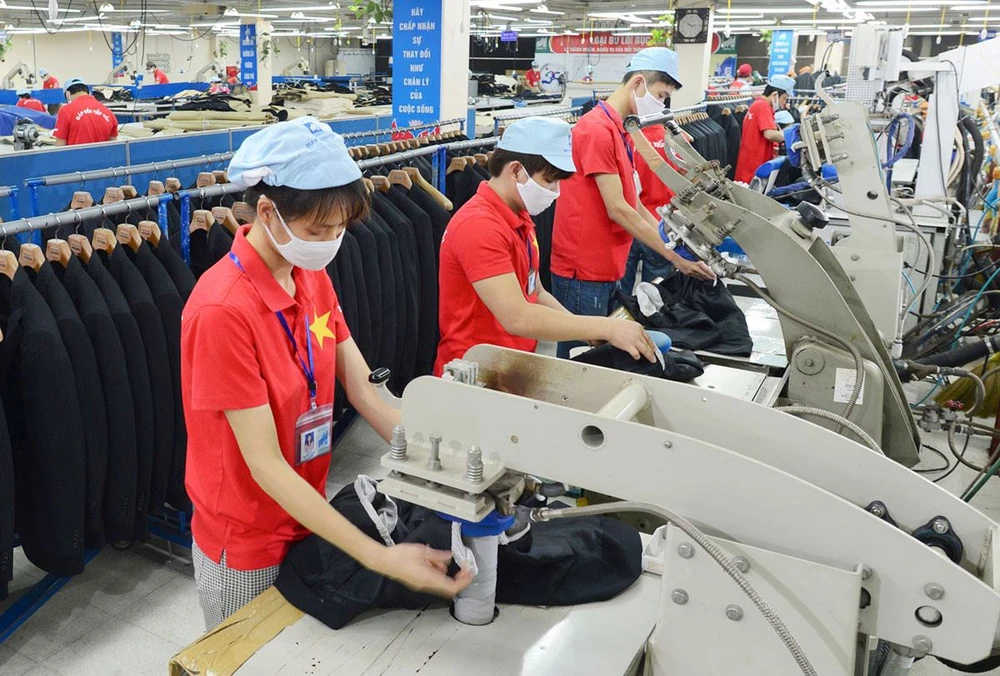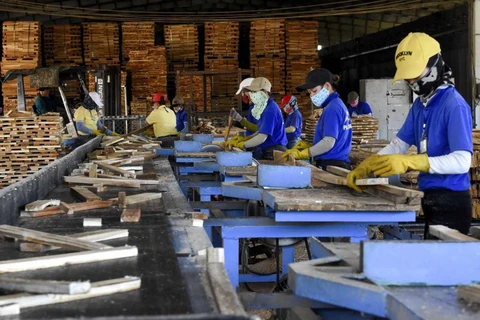
Hanoi (VNA) – The Comprehensive and Progressive Agreement for Trans-Pacific Partnership (CPTPP), which has helped generate impressive growth of Vietnam’s exports in the last five years, still has great potential for exploitation, according to experts.
Bright signs in exports to CPTPP markets
According to the Vietnam Textile and Apparel Association (Vitas), in the first eight months of this year, Vietnam earned 5.46 billion USD from exporting garment and textile products to CPTPP markets, up 4.3% year on year, accounting for 15.88% of the sector’s total exports.
Positive growth was seen in major markets such as Japan, Canada, Australia, Mexico, and New Zealand. Particularly, a respective surge of 26.92 and 26.14% was recorded in the Mexican and New Zealand markets.
Vitas Chairman Vu Duc Giang said that the agreement has not only helped the sector expand export markets but also prompted the textile industry to improve technology and product quality to meet the strict standards of the international market.
Similar to the textile industry, over recent years, the markets of the agreement bloc countries have also made up a large proportion of exports of Vietnam's seafood industry.
Vice General Secretary of the Vietnam Association of Seafood Exporters and Producers (VASEP) Nguyen Hoai Nam said that the markets contributed 2-2.5 billion USD to the sector’s export value of 10 billion USD.
In 2022, seafood export turnover increased more than 20% compared to 2021, of which growth in the bloc increased 30.6%. In 2023 when exports to most markets decreased sharply by more than 20%, the markets dropped by 16.4%. These figures show that the CPTPP is an important set of markets and a great support for the seafood industry with room for development, Nam said.
Statistics from the General Department of Vietnam Customs showed that exports to the bloc member countries in North America rose 56.3% to 13.6 billion USD in 2023 from 8.7 billion USD in 2018. Vietnam's exports to these markets nearly doubled from 6.3 billion USD in 2018 to 11.7 billion USD in 2023, while trade surplus almost tripled from 3.9 billion USD to 11.01 billion USD.
Particularly, impressive growth has been seen in trade between Vietnam and Mexico and Canada since the agreement took effect. Vietnam is Mexico's 10th largest partner, with Vietnam's exports to Mexico seeing a 10-fold increase in the past five years.
Similarly, Vietnam has won 35% of the market share in Canada, one of the 10 potential customers for Vietnamese products thanks to CPTPP.
Increasing market shares for Vietnamese products
Although Vietnamese goods have shown greater presence in those markets, according to experts, their added value has remained low as they are mostly exported in the raw form without due attention to product specification and trademarks.
According to Vice Director of the MoIT’s Multilateral Trade Policy Department Ngo Chung Khanh, there is plenty of room for trade cooperation between Vietnam and the CPTPP countries. The UK's recent accession to the CPTPP and the fact that many other economies seeking to join the pact will create further opportunities for cooperation, Khanh said.
Vietnamese enterprises can consider doing business and investing in production in American countries such as Canada, Mexico, and Peru, he suggested. He pointed to the need for specialised cooperation mechanisms by field, and cooperation mechanism connecting Vietnamese enterprises and North and South American countries.
Experts held that it is necessary to develop a domestic raw material centre and strengthen connections among the businesses to enable them to participate deeply in the global supply chain, especially with member countries.
In order to support businesses in taking advantage of incentives, the MoIT will continue to popularise the CPTPP as well as other free trade agreements, while coordinating with associations to promote Vietnamese brands, seeking solutions to reduce logistic costs, speeding up administrative reform and supporting businesses to connect with international partners./.






















